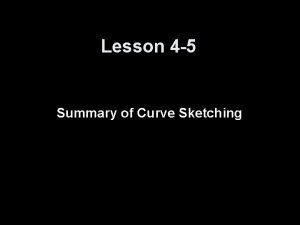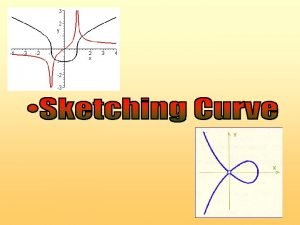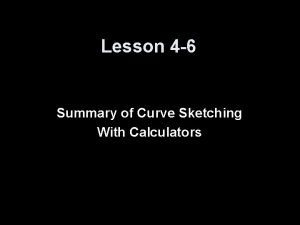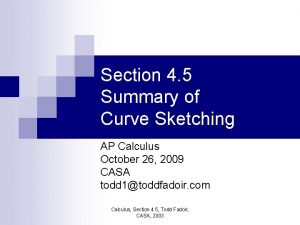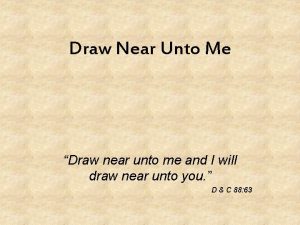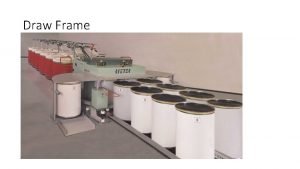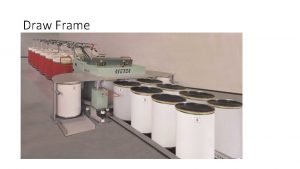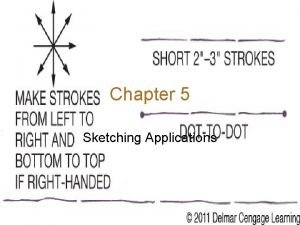4 3 CURVE SKETCING CURVE SKETCHING To draw









- Slides: 9

4. 3 CURVE SKETCING

CURVE SKETCHING � To draw a curve without a calculator, we must know the following things: 1. Zeros � 2. 3. 4. Asymptotes Points of discontinuity Local mins/local maxes � 5. Set orginal function = 0 and solve Find critical points by taking derivative, setting = 0, and solving. Concavity

FIRST DERIVATIVE TEST � We have already discussed how to determine if a point is a local min or a local max. � First Derivative Test � At a critical point, if f’ changes signs, then it is a local extreme. � If f’ does not change sign at a critical point, then this point is not an extreme value. � At endpoints: � If f’ < 0 after the left endpoint, then the left endpoint is a local max. � If f’ > 0 after the left endpoint, then the left endpoint is a local min. � If f’ < 0 before the right endpoint, then the right endpoint is a local min. � If f’ > 0 before the right endpoint, then the right endpoint is a

FIRST DERIVATIVE TEST � Example: � Use the First Derivative Test to find the local extreme values of g(x) = (x 2 – 3)ex.

CONCAVITY � Concavity talks about the way a graph is turned. � “Smiley face” = concave up � “Frowny face” = concave down � To find where a graph is concave up, find the points of inflection � The place on a graph where concavity changes. � Find second derivative and set = 0.

CONCAVITY � Example: � Find x 2. all points of inflection of the graph of y = e-

CURVE SKETCHING � Example � Sketch the curve f(x) = x 3 – 5 x 2 + 3 x + 6.

CURVE SKETCHING � Example: �A particle is moving along the x-axis with position function x(t) = 2 t 3 – 14 t 2 + 22 t – 5 for t ≥ 0. Find the velocity and acceleration and describe the motion of the particle.

SECOND DERIVATIVE TEST � Another way to determine local mins/local maxes is by the Second Derivative Test. � If at a critical point f’’(c) is negative (concave down), then f has a local max at x = c. � If at a critical point f’’(c) is positive (concave up), then f has a local min at x = c. � Note: You cannot use this test is f’’(c) = 0 or f’’(c) fails to exist.
